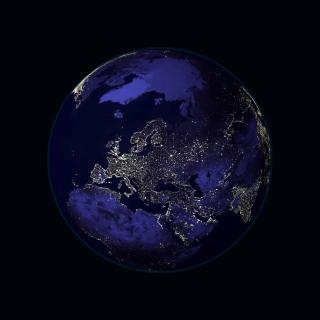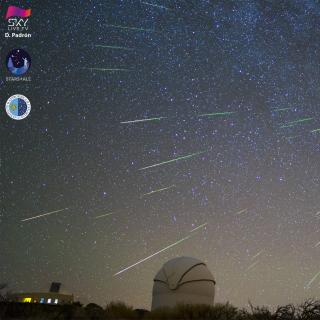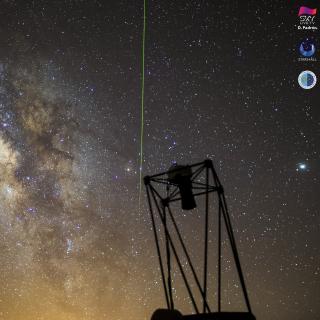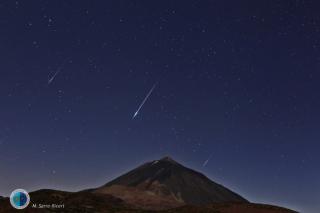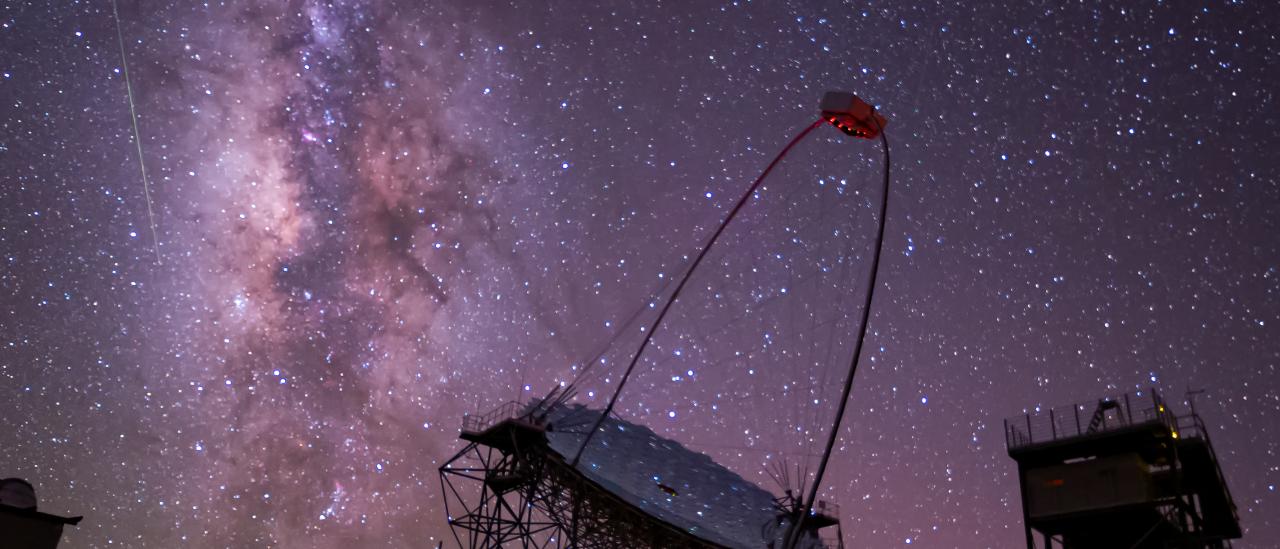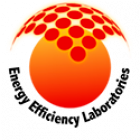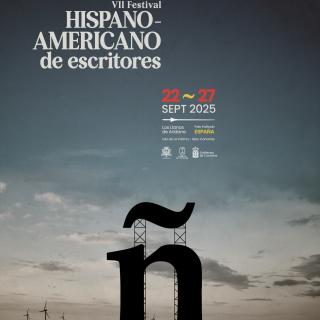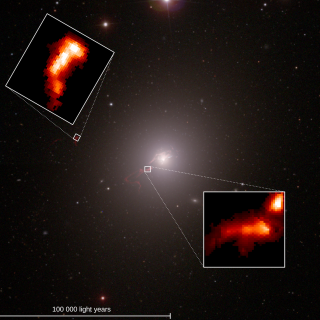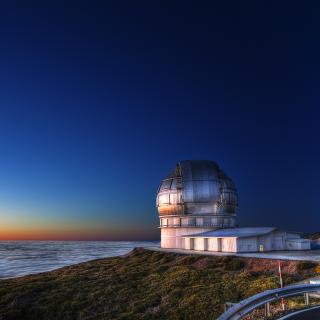For yet another year the sky-live.tv channel will be broadcasting the maximum of the Perseids from the Canary Observatories, with the collaboration of the Energy Efficiency Laboratories (EELabs) project, coordinated by the Instituto de Astrofísica de Canarias (IAC) and the Innovation Service of the Cabildo Insular of La Palma. This will be during the night of 12th to 13th August, when the best estimates for the activity of the meteors is a rate of 100 per hour.
Even though the first records of the Perseids date from 36 A.D., it was not until 1835 that the Belgian astronomer Adolphe Quetelet identified the radiant of this meteor shower (the point on the sky from which they appear to come) in the constellation of Perseus, which gave them their name. The Perseids, also known as the "Tears of St. Lawrence", is a shower of stars originating from the cloud of dust and rocks that the comet Swift-Tuttle has left in its wake on each of its orbits around the Sun. Every year at these dates the Earth passes through the cloud of dust and rocks which Comet Swift-Tuttle leaves behind on each of its orbits around the Sun. As a result, from mid-July until the end of August we can see the activity of the Perseids.
For the year 2021 the Perseids activity will occur between 17 July and 24 August. The maximum is expected in the early hours of 12-13 August. Therefore, these nights and those of the next few days, between 11 and 14 August, will be the best nights to enjoy this meteor shower. Also this year, the low brightness of the Moon, (new Moon is on the 8th August) will help us to see even some of the fainter meteors. We know, from the best models, that the activity of the Perseids at maximum is around 100 meteors per hour (ZHR, or zenithal hourly rate).
What are “shooting stars”?
“Shooting stars” are what we call the small particles of dust, of different sizes, some smaller than grains of sand, which are thrown off by comets or asteroids as they proceed along their orbits round the Sun. The resulting cloud of particles (called meteoroids) due to the thawing out of a comet caused by the Sun’s heat, is dispersed along the orbit of the comet, and the Earth passes through this every year on its orbit around the Sun. During this encounter the dust particles disintegrate as they enter the Earth’s atmosphere at high velocity, giving rise to the well know luminous trails whose scientific name is meteors. (A meteorite is a meteor big enough to survive its passage through the atmosphere and land on the surface of the Earth)
The progenitor of the Perseids is Comet Swift-Tuttle, which orbits the Sun approximately every 130 years and was discovered in 1862, and which, with a diameter of some 26 km, is currently the largest object which makes periodic approaches to the Earth.
Families counting meteors
Meteor showers are not only an attractive spectacle in the sky, but thanks to them we can and should do some science. To make a good estimate of the number of meteors per unit of time, in other words the activity of the shower, is very important because it helps us to find the density of the number of meteors in the orbit of the comet which left them behind, in this case comet Swift-Tuttle. For the 2021 Perseids the Instituto de Astrofísica de Canarias (IAC) and the Polytechnic University of Madrid (UPM) have united to produce the citizen science project Contadores de Estrellas. Counters of Stars, funded by the FECYT (Spanish Foundation for Science and Technology). Together they have produced a didactic activity in which any citizen can collaborate in making these counts.
The guide describes the procedure to follow via certain apps, which have to be previously installed on their cellphones, and using very simple material. The challenge is to procure that, in a very simple way, the general public can participate and understand this astronomical phenomenon, as well as other features of the sky which are explained in the guide. This is designed to be carried out in the family, or in teams, because the event occurs, usually, during the holidays and it is usual for citizens to take advantage of the opportunity to observe.
Live from the Canary Observatories
Within the framework of the outreach activities of the Energy Efficiency Laboratories (EELabs) project, which studies the impact of light pollution on the natural areas of Macaronesia and works to protect the darkness of its skies, the sky-live.tv channel will broadcast live this meteor shower from the Canary Island Observatories, under its coordinator Miquel Serra-Ricart. "The Perseids give us an assured spectacle. Last year we had an activity of 78 meteors per hour, while in 2019 the number reached 99. The forecasts for this year are very good, above all bearing in mind that we will be able to see the fainter Perseids thanks to the low level of scattered moonlight", comments Serra-Ricart.
The appointment will be next Thursday 12 August at 23:15 UT (13 August 00:15 local time in the Canary Islands, 01:15 CEST, local time in Europe). Link to YouTube: https://youtu.be/RgD0w7TAmqE
EELabs (eelabs.eu) is a project funded by the Programme INTERREG V-A MAC 2014-2020, cofinanced by FEDER (European Fund for Regional Development) of the European Union, under contract number MAC2/4.6d/238. Five centres in Macaronesia (IAC, ITER, ULPGC, SPEA-Azores and SPEA-Madeira) work in EELabs. The objective of EELabs is to build laboratories to measure the energy efficiency of the artificial night lighting in protected natural areas in Macaronesia (the Canaires, Madeira, and the Azores).
Three Spanish supercomputing centres: the Centro Extremeño de Tecnologías Avanzadas (CETA-CIEMAT), the Consorci de Serveis Universitaris de Catalunya (CSUC) and the Instituto de Astrofísica de Canarias (IAC) will collaborate in the distribution of the web portal broadcast (sky-live.tv).
Didactic material
- Star Counters
http://www.contadoresdeestrellas.org/
- Star Counters Guide
Audiovisual material
- Compilation of the best Perseids of 2020 from the Teide Observatory: https://flic.kr/p/2jvUT9y
- High quality images of meteor showers: https://www.flickr.com/photos/65131760@N06/sets/72157634760969777/
